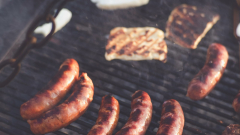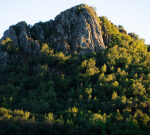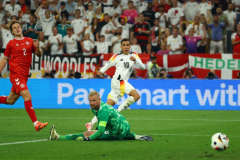The Australian info Australia’s first prawn farm, built nearly 40 years ago at Palmers Island, is one of three in the region up for sale in the wake of a white spot disease outbreak on the New South Wales North Coast.
Key points:NSW prawn farmers are ineligible for compensation provided to Queensland counterpartsThe government offers on-farm grants to enhance biosecurity measures Prawn farmers are unwilling to gamble investing another season while the disease threat lingersAlan Roberts from Tru Blu Prawn Farm near Yamba said the virus had effectively wiped out his business, which had ridden the highs and lows of aquaculture since 1983.
“It’s like we’ve been given the kiss of death,” Mr Roberts said.
“We just got out of debt and now to back into a couple of million dollars of debt or more, with no security if we get white spot again, who will pay the clean-up cost?
“We are done and dusted.”
Frank Roberts converted his cane farm into prawn ponds in 1983.(Supplied: Alan Roberts)
Disease returnsWhite spot was first revealed in NSW in August 2022 through routine testing of brood prawns caught off the coast near Iluka and brought onto the Roberts farm to breed.
The virus is lethal to crustaceans but poses no risk to human health or food safety.
The NSW Department of Primary Industries (DPI) led an eradication effort including decontaminating the farm and destroying prawns.
It also tested wild prawns in the nearby Clarence River and found no evidence of the virus before declaring the area was free of white spot.
However, six months later sick prawns on a neighbouring farm tested positive.
Within weeks, all three prawn farms on Palmers Island had white spot, including Aus Farm run by Steve Lii.
“We lost everything. All our staff lost their jobs — they’ve been working here for more than 15 years,” Mr Lii said.
Steve Lii says millions of dollars have been spent growing his business.(ABC News: Bronwyn Herbert)
Aquatic veterinarian Matt Landos, who has worked closely with two of the affected prawn farms since the disease outbreak, said the NSW government’s declaration in September 2022 that the area was free of white spot was premature.
“The mistake is saying we’ve eradicated it, we’ve got it all, which would have been amazing,” Dr Landos said.
“White spot persists at low levels and is tremendously difficult to find.”
Matt Landos says there is no clarity about covering the costs of decomtaminating farms.(ABC News: Bronwyn Herbert)
Costly clean-upThe NSW prawn aquaculture industry was valued at around $14 million in 2021–22.
Dr Landos said the NSW DPI had not yet provided guidance to farmers on what the rules would be if they got white spot again.
“The government spent over $4 million on chlorine last time, and if you are a prawn farmer who is going to pick up the tab next time?” he said.
“You might be very reluctant to farm again.”
NSW chief veterinarian Joanne Coombe said wild-caught prawns at Lake Woolewayah were detected with white spot during the height of
Read More





